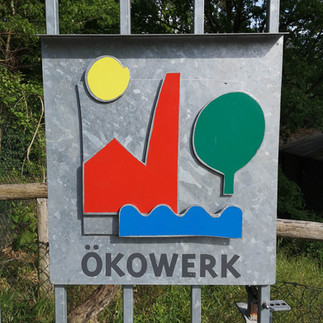On our first day we met in an inclusive Garden in Moritzplatz and after a warm welcome and a short presentation round we received an insightful presentation of the concept of this specific garden. Inspired by such a good example on how to include neighbouring communities and people who live close by, we discussed all formalities of the project and shared our previously prepared methods with each other. Zasiej from Poland made us translate our mood and current state of being into a plant species that we presented to each other and Kilowatt from Italy made us test a capacity building exercise in which we got to know the skills and knowledge we have amongst us and can be used in the project.

On the second day we met in Potsdam, outside of Berlin at the Projekthaus Potsdam. We received a presentation about the place which is a self-managed housing project, with a public wood, clay and sewing workshop, promoting social, ecological and inclusive ideas for the future. In their garden we tested an interactive method of ’reclaiming space’ from CRN which involved chalk painting and some acting skills. Changemaker introduced an easy method on how to measure qualitative and qualitative impact for any chosen project. We took Himmelbeet as a practice example. The third method of the day 'Barriers check' was presented by the Himmelbeet team. It made us take on roles of children, single parents, visually impaired or a person in a wheelchair - and experience the place we are at.

The third day felt like a nature retreat: we explored the wonderful place of Ökowerk in the city forest Grunewald. SaluTerre presented their Photolanguage methodology, which is a tool they use for future gardeners and community building. Another methodology presented by Krakow Municipal Greenspace Authority was a drawing practice by the Krakow team where everyone was to make their own guide as to "How to make toast". This exercise can be used to share knowledge on how to grow/make compost etc. or prepare easy language information for the gardens. Last but not least SaluTerre set up their method Sensory Walk where participants receive a blind fold and are to hold onto a rope which is then guided through a sensory experience of the surrounding space. In between the methodology sharing sessions we practiced fun warm ups to get to know each other and sharpen our senses.












Yorumlar